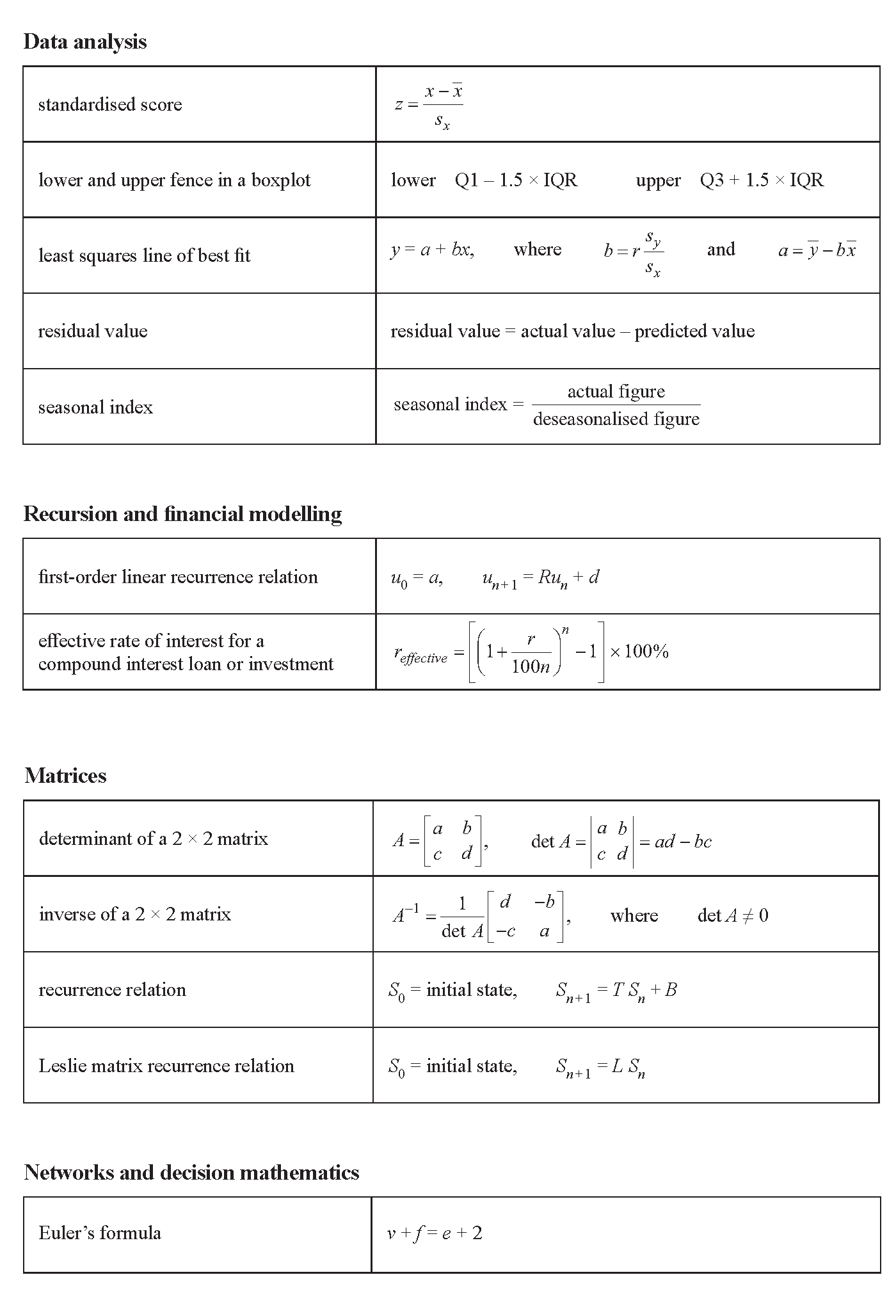VCE General Maths Data Analysis 2018 Mini Test 3
VCAA General Maths Exam 2
This is the full VCE General Maths Exam with worked solutions. You can also try Mini-Tests, which are official VCAA exams split into short tests you can do anytime.
Number of marks: 9
Reading time: 2 minutes
Writing time: 13 minutes
Instructions
• Answer all questions in the spaces provided.
• Write your responses in English.
• In all questions where a numerical answer is required, you should only round your answer when instructed to do so.
• Unless otherwise indicated, the diagrams in this book are not drawn to scale.
Data analysis - 2018 - Exam 2 (Part 3)
Table 3 shows the yearly average traffic congestion levels in two cities, Melbourne and Sydney, during the period 2008 to 2016. Also shown is a time series plot of the same data.
The time series plot for Melbourne is incomplete.
Table 3
| Year | Congestion level (%) | ||||||||
|---|---|---|---|---|---|---|---|---|---|
| 2008 | 2009 | 2010 | 2011 | 2012 | 2013 | 2014 | 2015 | 2016 | |
| Melbourne | 25 | 26 | 26 | 27 | 28 | 28 | 28 | 29 | 33 |
| Sydney | 28 | 30 | 32 | 33 | 34 | 34 | 35 | 36 | 39 |

a. Use the data in Table 3 to complete the time series plot above for Melbourne. 1 mark
(Answer on the time series plot above.)
b. A least squares line is used to model the trend in the time series plot for Sydney. The equation is
congestion level = \(-2280 + 1.15 \times\) year
i. Draw this least squares line on the time series plot on page 8. 1 mark
(Answer on the time series plot on page 8.)
ii. Use the equation of the least squares line to determine the average rate of increase in percentage congestion level for the period 2008 to 2016 in Sydney.
Write your answer in the box provided below. 1 mark
% per year
iii. Use the least squares line to predict when the percentage congestion level in Sydney will be 43%. 1 mark
The yearly average traffic congestion level data for Melbourne is repeated in Table 4 below.
Table 4
| Year | Congestion level (%) | ||||||||
|---|---|---|---|---|---|---|---|---|---|
| 2008 | 2009 | 2010 | 2011 | 2012 | 2013 | 2014 | 2015 | 2016 | |
| Melbourne | 25 | 26 | 26 | 27 | 28 | 28 | 28 | 29 | 33 |
c. When a least squares line is used to model the trend in the data for Melbourne, the intercept of this line is approximately \(-1514.75556\).
Round this value to four significant figures. 1 mark
d. Use the data in Table 4 to determine the equation of the least squares line that can be used to model the trend in the data for Melbourne. The variable year is the explanatory variable.
Write the values of the intercept and the slope of this least squares line in the appropriate boxes provided below.
Round both values to four significant figures. 2 marks
congestion level = + \(\times\) year
e. Since 2008, the equations of the least squares lines for Sydney and Melbourne have predicted that future traffic congestion levels in Sydney will always exceed future traffic congestion levels in Melbourne.
Explain why, quoting the values of appropriate statistics. 2 marks
End of Multiple-Choice Question Book
VCE is a registered trademark of the VCAA. The VCAA does not endorse or make any warranties regarding this study resource. Past VCE exams and related content can be accessed directly at www.vcaa.vic.edu.au
